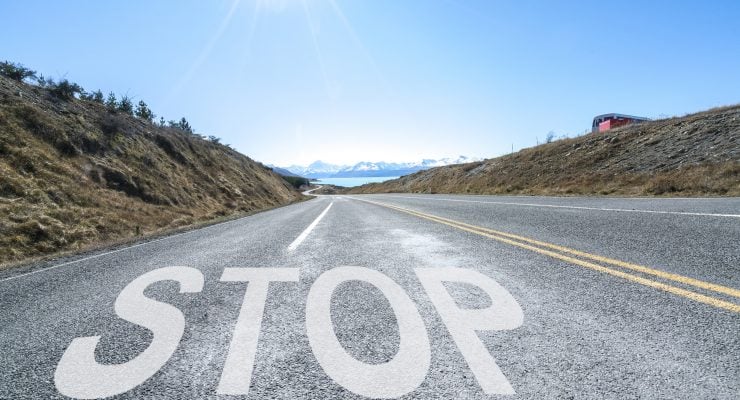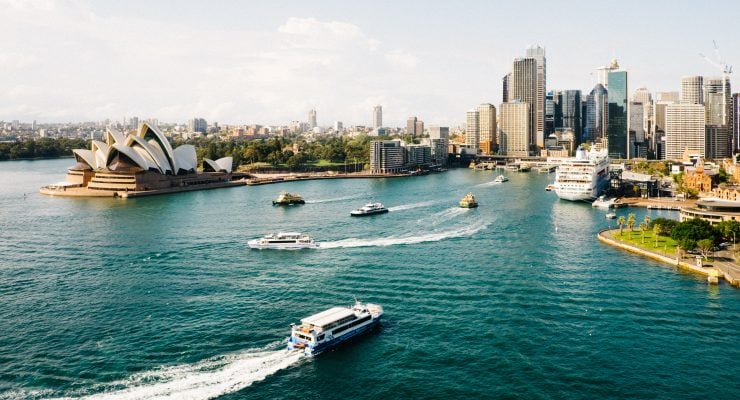Dos and don’ts of an Australia resume
Canadian, British, Kiwi and Irish job seekers and former WHV holders who spent time in these countries probably won’t find Australian resumes very different from what they are used to.
A typical resume for a skilled position can be up to three pages long. However, keep it to one page maximum for fruit picking jobs, general customer service or restaurant positions and other minimum-wage jobs.
Absolutely no one enjoys writing resumes and cover letters, so be efficient! Tailor both to the position you’re applying for instead of listing every single work experience and school project. Reuse relevant job ad keywords (i.e. “flexible,” “project management,” “team worker,” etc.) and provide measurable accomplishment (i.e. “handled 200 inquiry calls daily,” “served four-to-six tables in a high volume restaurant,” “increased sales by 35%,” etc.).
Finally, use a professional email address ([email protected] or [email protected] are not considered professional addresses…) proof your document thoroughly and address them to the right person (LinkedIn is your friend to avoid “to whom it may concern”!).
Info to leave off your resume
Personal information that could potentially discriminate candidates is never included. Do not add:
- A picture
- Your birthdate or age
- Your gender
- Your marital status (or the number of children you have)
- Your race
- Your political affiliation or religion
Of course, hiring managers may guess easily if you’re male or female based on your name or your age range based on your work experience but it would be a major faux pas to specify it.
What should be on your resume
Contact information
Start with your first and last name, address, phone number and email.
It’s best to provide an Australian address and phone number and a .com email address (as in “I’m here, ready to work!”).
You can also add your LinkedIn profile link—make sure it’s as polished as your resume!
Resume profile
This is a one- or two-line summary of your skills, experiences, and goals as they relate to the specific position. You have to be catchy—now is probably when you select a few relevant keywords from the job ad.
Work experience
This is the most important section!
List in reverse order (most recent experience first) relevant work experience. For each one, write:
- Job title
- Name of company (add the industry if it’s fairly cryptic, i.e. “PVTistes.net, a community website about Working Holiday Visas”)
- Location of the company (city and country)
- Start and end date (if still employed, write “from 2019”)
- Main responsibilities and achievements
Most applicants list their work experience in a reverse-chronological order as described above, but you can also choose a functional resume format and list skills and experience sorted by skill area or job function.
Remember, this is your moment to shine! Be factual, concise but add relevant metrics and performance achievements if applicable (XX new contracts signed, XX% sale increase, XX customers served daily, promotions, award or bonuses granted, etc.).
A resume is not a police background check. You don’t have to include short-term contracts, irrelevant high school jobs or, ahem, bad moves. For instance, if you took a door-to-door sales job just out of high school and quit two days later, you can safely omit what’s probably a lesson learned!
Running out of ideas to describe your responsibilities? Check this useful List of action verbs for resumes & professional profiles!
Education
Education matters but it may not be the most important section on your resume. First, many backpackers are technically overqualified for the type of jobs they take during their WHV experience—and it’s perfectly normal if you’re taking a gap year to explore Australia! Second, it’s unlikely that your school or university is famous enough in Australia for potential employers to notice it (… this statement may not apply if you’re a Harvard, MIT or Hogwarts graduate!).
If you’ve just graduated from high school—and even if you didn’t!—don’t worry about it. Plenty of backpackers are in the same boat. Try to highlight other skills on the rest of your resume (practical experience, flexibility, willingness to learn, etc.).
Like you did in the “work experience” section, list your degrees or certifications in a reverse-chronological order, starting with the most recent degrees. Clearly state the attained level of post-secondary education, for instance: “name of degree” (four-year university degree).
Every country has its own school and education system, so don’t assume your degrees are self-explanatory. WHV holders aiming for a skilled position may need to have their foreign degrees and credentials assessed by a designated organization for work or immigration purposes (read Qualifications and skills recognition for more information). Most backpackers can just state how their education compares to the Australian education system—read Australian education system and Australian Qualifications Framework to understand how it works and relates to your own education.
Language skills, computer skills, misc. certifications
You can develop this section if you have skills that would be a perfect fit for the position. For instance, speaking two foreign languages fluently is an asset to work in the tourism industry, probably not so much to pick watermelons.
Volunteer work and activities
This miscellaneous section is typically used to show another side of your personality. The employer may glance at it to see if you’d be a good fit. Transferable soft skills that show team spirit, dedication, creativity, etc. are always welcome. You can also add meaningful volunteering experiences, especially if you learned skills like time management, problem solving, etc.
References
The concept of “references,” also used in Canada and the USA, may be new to you. Basically, a professional reference is a former manager or supervisor willing to vouch for you if a potential employer contacts them. The typical basic question is: “Is this employee eligible for rehire?” (Hint, your former employer should reply “yes”!). Your reference may also be asked to talk about your professional skills, your character, your strengths and weaknesses.
References are usually contacted in the last stage of the hiring process.
Since you won’t have Australian references when you first arrive, ask your current and former employers for a letter of recommendation before you leave the country—it might do the trick! These letters should be written on company letterhead (with contact info) and highlight your skills.
Reference etiquette matters. You should always ask for people’s permission to use them as a reference. You should also thank them if they were contacted and if you got the job!
You could list your references on your resume but it’s usually best to wait for your prospective employer to request them—you will then submit them on a new document and list contact information (email and phone number) for each reference.
Skip the overused “references available upon request” mention at the bottom of your resume—hiring managers already know that.
Cover letters
Cover letters are usually part of the application process for skilled jobs but you can skip it (unless specifically requested) for fruit picking or general entry-level jobs.
The typical format for this typed, one-page letter is:
- An intro mentioning the position you are applying for and where you found the ad (a company can have several positions open, be specific!).
- A few paragraphs describing what you have to offer the employer. This is basically your pitch–explain how your qualifications match the job you are applying for and why you’d be a great fit. Don’t just copy experiences from your resume, detail what you would do for the potential employer. Make sure to connect your skills, experiences and background to the position and don’t be afraid to reuse the keywords from the ad in context. You can research the company to show you understand business activities.
- Close by thanking the person for considering you for the position and include your contact information for easy follow up.
Useful links for your Australian resume and cover letter
Many Australian universities have a “Careers” section with tips and advice for students. It’s a precious resource for foreign backpackers as well!
- “Resumes” from the Australian National University
- “Applying for work” from The University of Melbourne
- “Applying for jobs” from The University of Sydney
- “How to write a resume” from Monash University
State government websites also have interesting resources:
- “How to write a resume and cover letter” from the Queensland Government
- “Applying for a job” and “How to apply for a job in Melbourne” from Live in Melbourne
- “Job search and job application resources” from the Government of Western Australia
- “Tips to help you get a job” and “How to write a resume” from the Government of Australia
Several staffing agencies and job search websites also have great resources:
- Kelly Services’ “How to write a resume” and “How to write a cover letter”
- “Resumes and cover letters” from SEEK
- “How to format your resume – Australian style” from CareerOne

















 Français
Français English
English




0 comments
{{like.username}}
Loading...
Load more